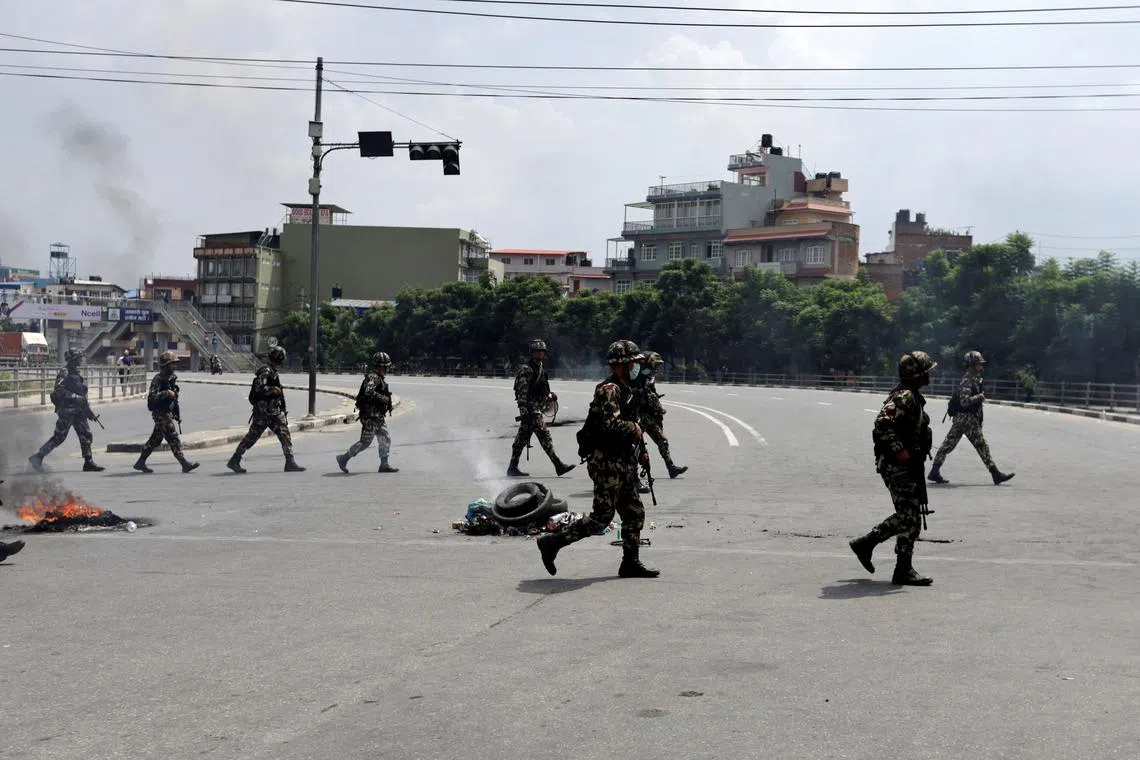Nepal’s history of political instability
Sign up now: Get ST's newsletters delivered to your inbox

Violent nationwide anti-corruption protests took place in Nepal on Sept 9, plunging the Himalayan country into fresh political uncertainty.
PHOTO: REUTERS
Follow topic:
NEW DELHI – Nepal Prime Minister K.P. Sharma Oli resigned on Sept 9
Nepal, wedged between giant neighbours China and India, has had 14 governments since 2008, none of which has completed a full five-year term.
Here is a timeline of major events:
1951
Before 1951, Nepal was ruled by monarchs from various dynasties, including the Ranas, who governed through a system in which the post of prime minister was hereditary.
The Ranas were overthrown in 1951 by ascendant pro-democracy movements, and a parliamentary democracy was established.
1961 to 1990
King Mahendra banned political parties in 1961 and imposed a return to a centralised system of government that consolidated his power, known as the “Panchayat”.
People’s frustration with the system grew and peaked in 1990, when some parties launched a campaign and staged demonstrations to restore multiparty democracy.
The campaign, popularly known as the People’s Movement, compelled King Birendra to lift the ban on political parties, ending the Panchayat system.
1996
Nepal’s left-wing Maoists began a violent bid to replace the royal parliamentary system with a people’s republic. That led to a decade-long civil war and caused more than 17,000 deaths.
2006 to 2015
Civilians protested against the monarchy in 2006, leading to its abolition in 2008 and making Nepal a federal democratic republic. King Gyanendra, the last monarch, lives as a commoner in the capital Kathmandu.
In 2015, Nepal adopted a new Constitution.
2015 to present
Mr Oli took over as prime minister of Nepal for the first time in October 2015 and his government lasted for about a year. He was elected for the second and third time successively in 2018 and 2021 and for the fourth time in 2024. REUTERS

